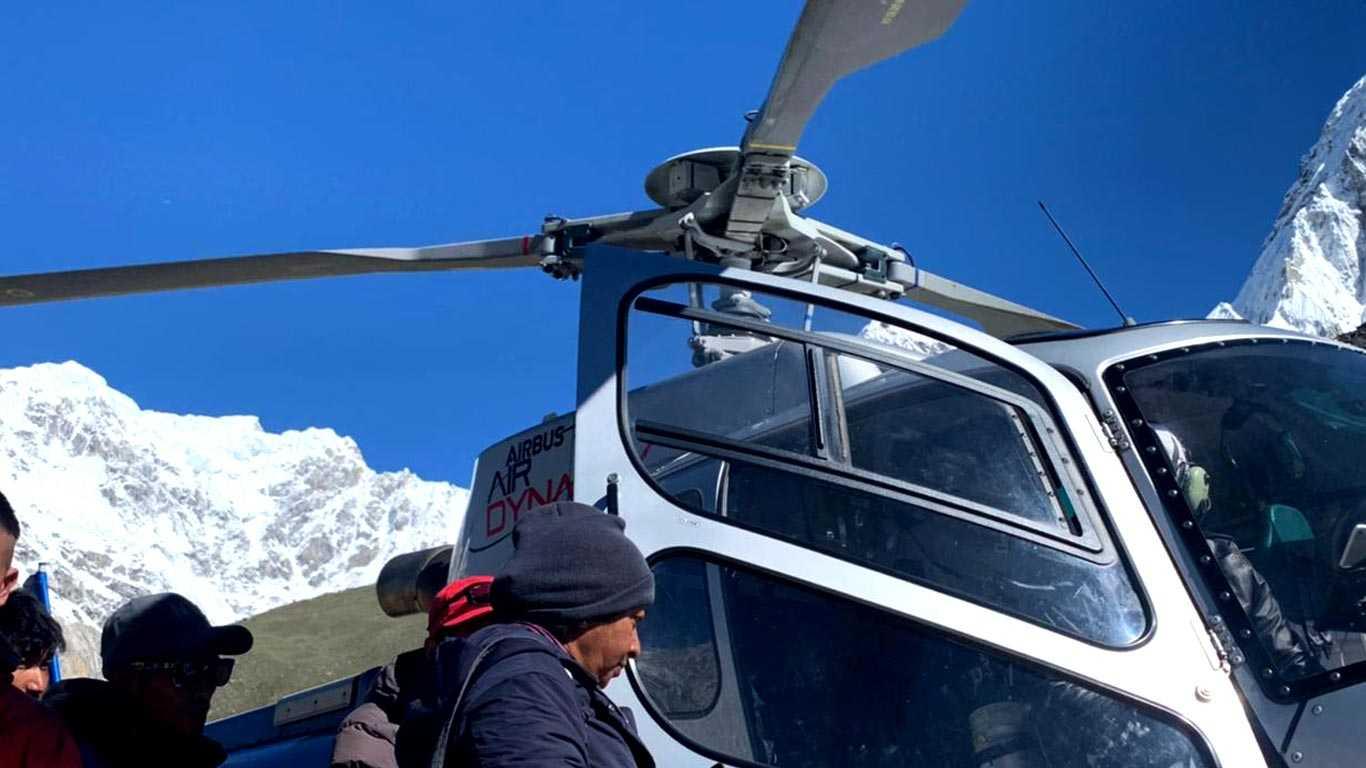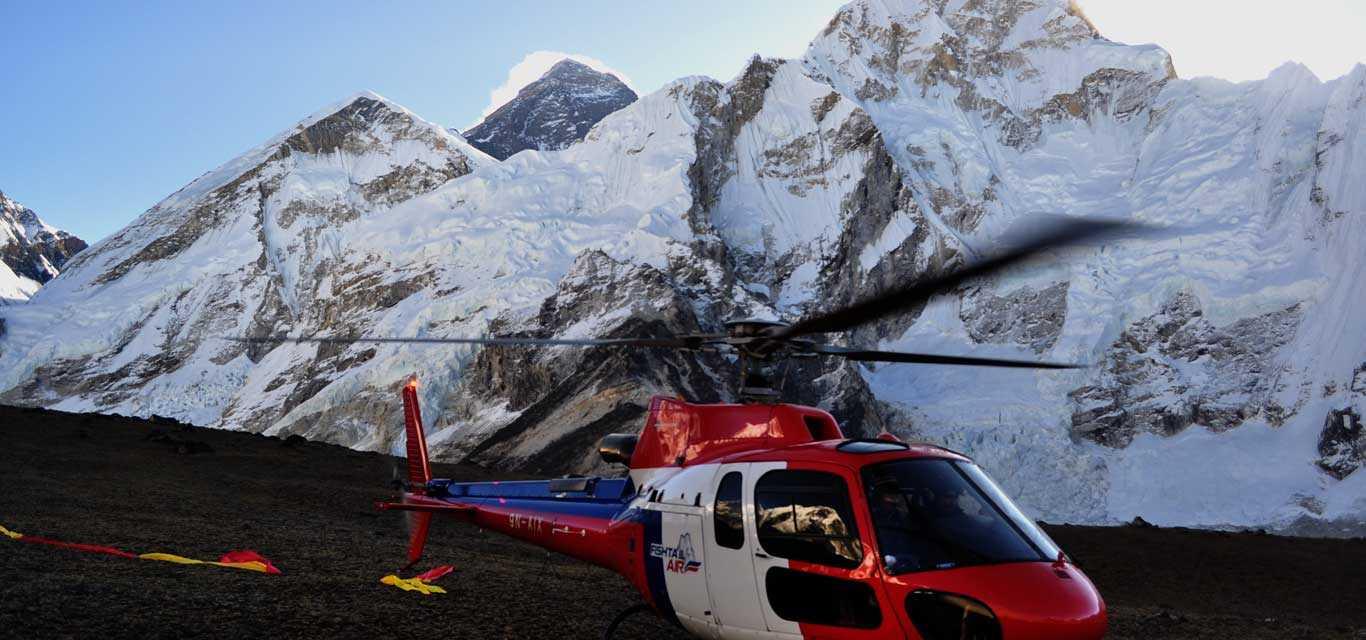Wildlife (Jungle) Safari in Nepal

Wildlife (Jungle) Safari in Nepal
If you are a lover of wilderness and wildlife, then a wildlife safari in Nepal is one of the most incredible experiences that you can ever undertake. While Nepal may be surrounded by mountains, it still has several interesting animals.
Some of the natural attractions that are included are the jungle, where one can be privileged enough to see tigers, rhinos, and elephants. Whatever you like, being outdoors, taking photos, or seeing nature, once you come to visit, you will be specially catered to with a feel of the safari here.
This astonishing creation can be witnessed in Nepal, either in Chitwan or Bardia National Park. You may avail yourself of either a jeep tour or an elephant-back tour. Professional tour guides ensure that your safety is guaranteed.
Whether you are solo or headed as a family, every person will surely have a great time. Maybe a lifetime, a wildlife safari in Nepal is one thing you will never forget.
Best Wildlife Safaris in Nepal
Here’s a list of places to experience the best wildlife safaris in Nepal. Moreover, this isn’t a ranked list. Each of the parks and safaris offers a unique experience!
Chitwan National Park Jungle Safari
Chitwan is the first national park in Nepal. And it was declared a national park in 1973. Established in the subtropical lowlands of south-central Nepal, the park occupies a land surface area of 952.63 square kilometres.
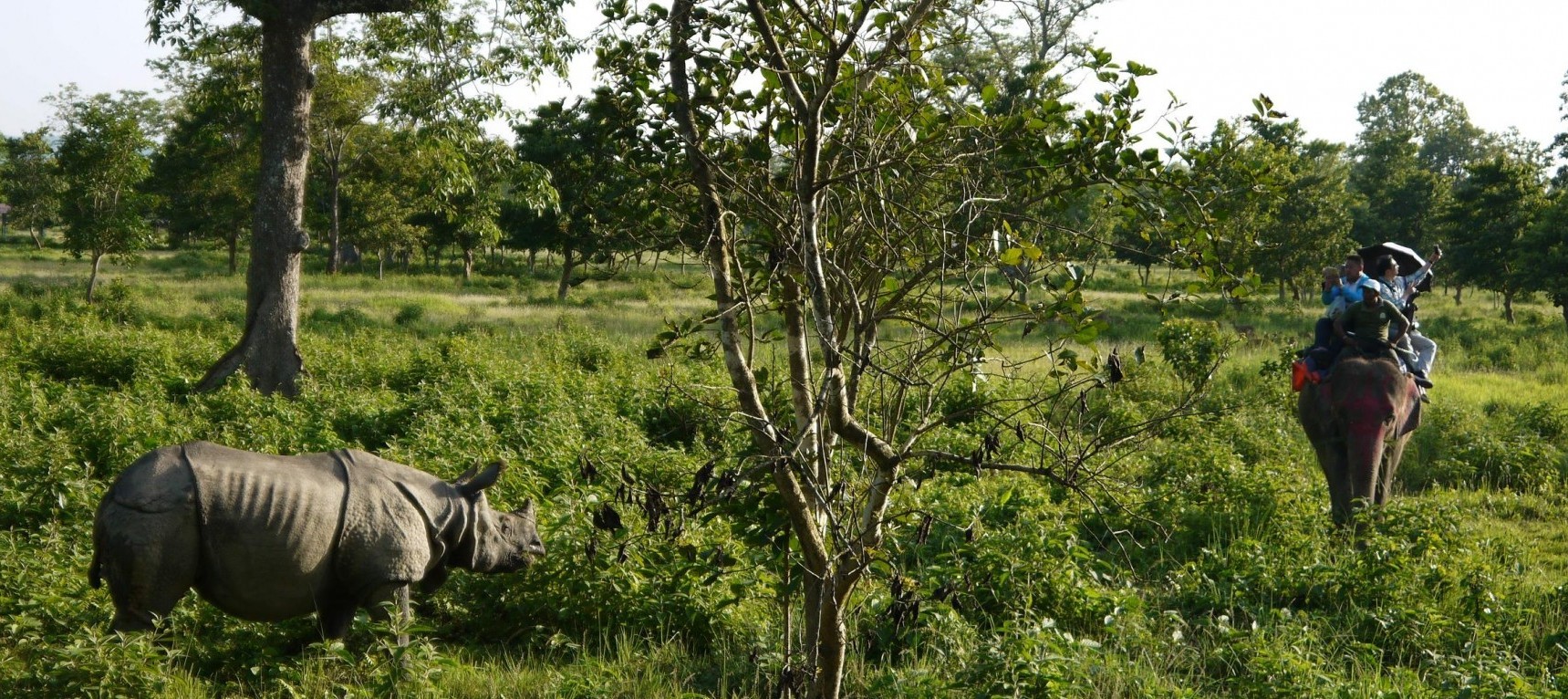 For more than 25 years, the park has been listed as a UNESCO World Heritage Site since the year 1984.
For more than 25 years, the park has been listed as a UNESCO World Heritage Site since the year 1984.
Safaris in the Park
Chitwan is full of tourist attractions, and visitors can engage in different types of safaris. Wildlife found here consists of over 700 species. Hence, it is a breeding ground for the endangered one-horned rhinoceros, Royal Bengal tigers, Asiatic elephants, and several species of deer.
Birdwatchers in particular can also sight over 525 species of birds and therefore will attract lovers of the natural world. There are several ways to explore the biological diversity in the park, such as the jeep wildlife safari in Nepal, elephant back safari, and walking with a guide.
Besides wildlife, guests will be able to witness the Tharu dance and culture in the form of homestays and wooden demonstrations. There, the park has facilities such as a visitor center and breeding centers for gharials, which primarily serve the purpose of providing knowledge to the tourists about conservation.
Best Time
The best tourist season to visit Chitwan National Park is during October, November, December, January, and February. Precipitation is between 200 to 250 mm per month, and the average temperatures are from 10°C during the nighttime to 25°C in the daytime.
However, the temperatures range from March to June and reach up to 43 degrees, which is quite hot. The rainy season is from June to September every year, but this is the peak travel season as well. Because of the monsoon rainfall, the land becomes flooded.
Bardiya National Park
Bardiya National Park is one of the most striking wildlife destinations in Nepal, situated in the Far western region of Nepal. Stretching out over about 968 sq km, it is the largest lowland Terai national park.
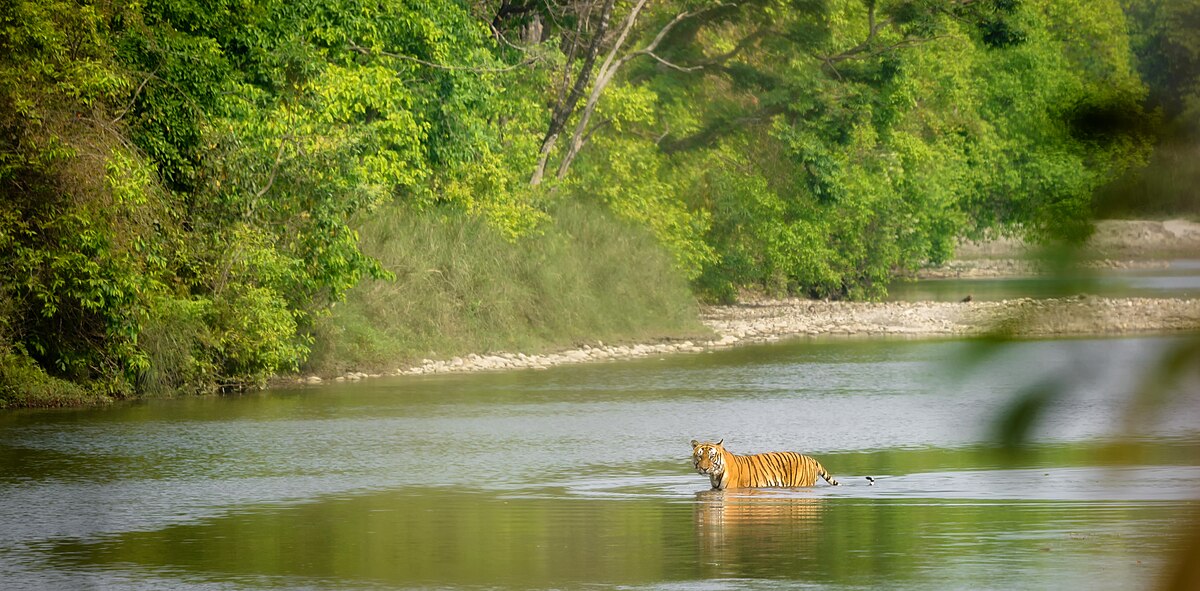 Located along Ring Road since its creation in 1988, the park was previously a hunting ground for the royal family. Today, it stands for the preservation of various kinds of environments and species threatened with extinction.
Located along Ring Road since its creation in 1988, the park was previously a hunting ground for the royal family. Today, it stands for the preservation of various kinds of environments and species threatened with extinction.
Safaris in the Park
Bardia National Park is best known for sustaining the Royal Bengal tiger, one-horned Rhino, and Asian elephants. Tourists often come because of many attractions. The park offers sightings of swamp deer, gharial crocodiles, and well over 400 different bird species. Due to the variety of wildlife found in the area, it plays host to many photographers and wildlife enthusiasts.
Visitors can do several things during their stay. Jeep safaris provide a unique means of viewing the large expanses of the park. At the same time, it increases the opportunity to spot wildlife.
Jungle walks would enable individuals to have a close experience of the forest. During the safari, a guide explains some features of the trees and animals. For the birds and living aquatic creatures, more adventurous tourists can go for a canoe ride on the Karnali River.
Some of the cultural activities include the Tharu dance in the evening. It also brings a cultural aspect into the wildlife safari. It enables tourists to learn about the other people of the country who live with wildlife.
Best Time
It is recommended that you visit Bardiya from March to May. Then again, between August and November. You will see wildlife thriving during the Spring and Autumn seasons. There is a variety of places to stay in the park, from very basic lodges to high-end resorts; however, the cost is mostly above $30 per night.
Koshi Tappu Wildlife Reserve
Koshi Tappu Wildlife Reserve is one of the best wildlife tourism sites in Nepal. It offers an experience in different ecosystems. The wildlife reserve complies with the country's natural resources.
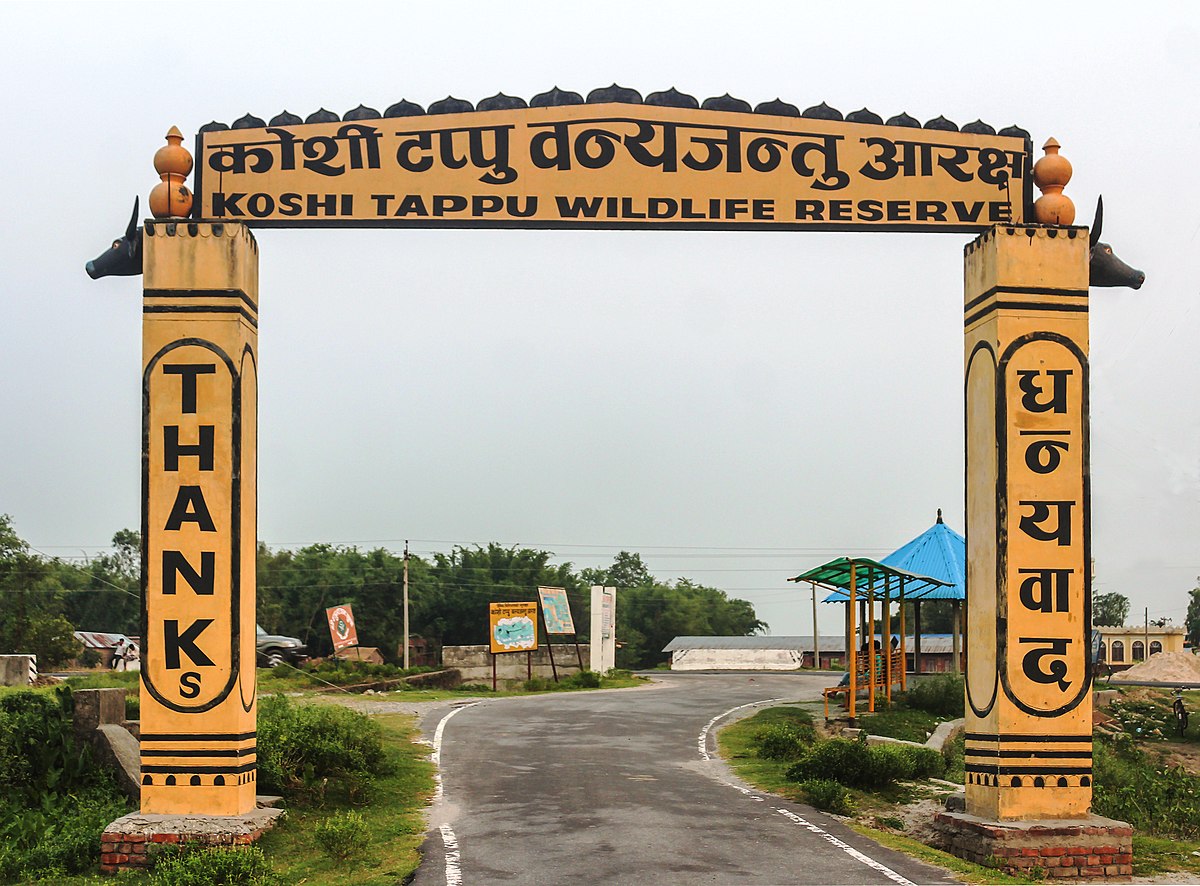 The reserve was set up in 1976. Koshi Tappu Wildlife Reserve lies over an area of 175 square kilometres in the floodplains of the Sapta Koshi River. It was originally conceived to conserve and restore the population of the Wild Water Buffalo, locally called Arna, and expanded to protect a host of other species.
The reserve was set up in 1976. Koshi Tappu Wildlife Reserve lies over an area of 175 square kilometres in the floodplains of the Sapta Koshi River. It was originally conceived to conserve and restore the population of the Wild Water Buffalo, locally called Arna, and expanded to protect a host of other species.
The reserve is most popular for birding. You can watch over 400 species of birds that have been sighted in the area. Tourists undertaking bird-watching have a view of the marshes, river banks, and streams within the reserve. Bird watching is best done during the migratory period. From October to March, most species will flock to the site.
Safaris in the Park
Another fascinating activity that tourists do in Koshi Tappu is jeep safaris. These guided tours allow guests to discover the jungles and riverbanks. Here, you can meet various birds, deer, gharial (crocodile), and, of course, Arna.
The jeep safari usually lasts a few hours, during which guests get a great opportunity to see animals and admire the magnificent scenery of the reserve.

For the vaguer spirits, those willing to take a slight risk can also enjoy a mild wildlife rafting down the Koshi River. It enables a person to float around beautiful terrains while enjoying the elaborate water birds and other wildlife along the riverine zones.
Sighting animals such as the kingfisher diving to catch fish or even the Gangetic River dolphin is easily possible, though rafting offers quite an entwined view of the reserve's ecosystems.
Wildlife safaris in Koshi Tappu offer packages based on the client's interests. Yet, the time available to undertake the activity is also a factor. One of the many packages available is the 3-Day Safari. Some of the activities a visitor is likely to engage in include bird-watching, jeep safaris, white water rafting, and village walks.
This package is perfect for those people who want to explore everything in Koshi Tappu but have limited time to do it. Bird enthusiasts in particular can take advantage of the 4-Day Safari, which has an additional day focused on the great birding station.
Best Time
The best time to do a wildlife safari in Koshi Tappu is between autumn and summer. During the Summer season, the heat is extreme. During the monsoon season, there is a high risk of flooding.
Parsa Wildlife Reserve
Parsa Wildlife Reserve is another adventurous destination for wildlife safaris in Nepal and is relatively distinct from the most famous national parks.
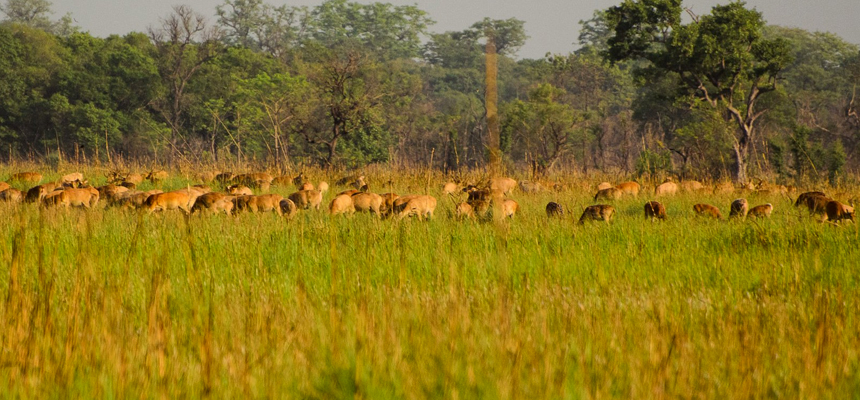 This wildlife reserve was set up in 1984. It has an area of 499 square kilometres, consisting of lowland Terai. The reserve stretches over the Parsa, Bara, and Makawanpur districts.
This wildlife reserve was set up in 1984. It has an area of 499 square kilometres, consisting of lowland Terai. The reserve stretches over the Parsa, Bara, and Makawanpur districts.
It is for this reason that the park is near the busier Chitwan National Park; however, the place is not as crowded, giving tourists a more private encounter with animals.
Its wildlife comprises the endangered Royal Bengal tiger, one-horned rhinoceros, wild elephants, Asiatic wild dogs, sloth bears, and leopards, to name but a few.
Bird lovers will also have reason to smile as data shows that there are over three hundred bird species that can be sighted at this location. Due to such rich biodiversity, Parsa is perfect for wildlife lovers who want to watch the wildlife in action.
Safaris in the Park
Safaris in Parsa can be done by either a jeep or the jungle tour on foot. Jeep safaris are especially common since they enable tourists to get more info within a shorter duration of time and cover more areas of the reserve regularly while observing wildlife frequently.

Some of these kinds of tours take between 3-4 hours and entail moving through different zones in the park, such as subtropical regions and grassland, among others. The opportunity to come face to face with a pride of lions, wild elephants, or even tigers increases the excitement of the trip.
For those tourists who wish to sample something more adventurous, there are guided jungle walks; these enable a slower examination of the reserve.
Within the park, tourists can use the opportunity to see and understand the jungle more closely. They are accompanied by experienced naturalists explaining particular plants or animals. They also explain the specifics of their work and existence.
Parsa offers several accommodation options. It ranges from a budget-friendly guest house to lodges. Almost all of these facilities provide dining services, including meals and safari tour packages. Four days of the packages are usually provided on average for ample discovering and unwinding in this lovely environment.
Best Time
October and March are considered the best months to visit Parsa National Park for a safari. During these months, it is dry in Nepal; the weather conditions are cool and pleasant.
These seasons see very good wildlife viewing in the wild and other outdoor sports such as hiking and birdwatching. These months are also an advantageous time because most of the time, the skies are clear, and hence visibility to spot animals is better.
Oppositely, between June and September is usually heavy during the monsoon period, due to the heavy rainfall, which may impede journeying or outdoor experiences.
Shuklaphanta Wildlife Reserve
Shuklaphanta Wildlife Reserve is a perfect destination for a wildlife safari in Nepal. This is home to the world's largest growing grasses, rhinoceros, wild pigs, and many more wild animals.
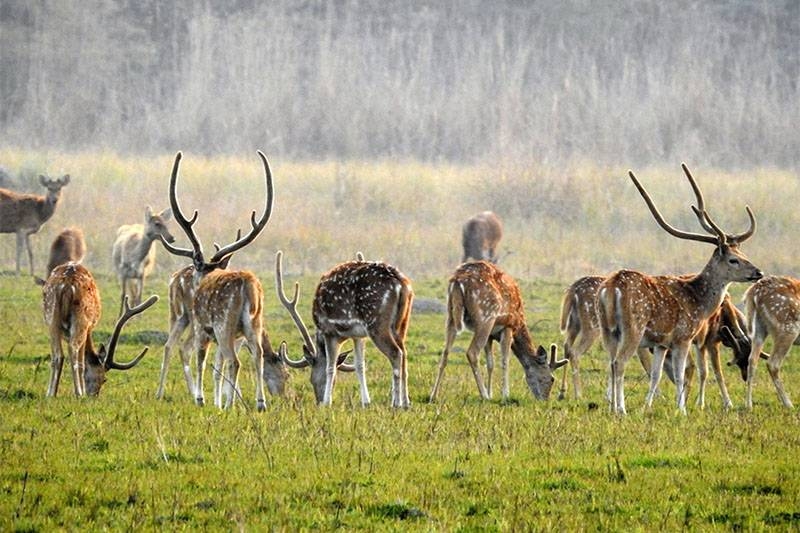 Extending to 305 square kilometres in the Far-Western Region of Nepal. This reserve was made in 1976 and was the hunting reserve of the kings. It has been declared a wildlife sanctuary to protect a large number of swamp deer populations in Asia, as well as numerous species.
Extending to 305 square kilometres in the Far-Western Region of Nepal. This reserve was made in 1976 and was the hunting reserve of the kings. It has been declared a wildlife sanctuary to protect a large number of swamp deer populations in Asia, as well as numerous species.
The reserve provides an environmental adventure. You can get a first-hand taste of the wildlife by touring the majestic reserve.
Safari in the Park
Jeep or elephant back can be used for carrying out jungle safaris, and each mode exposes travellers to different wildlife and terrains. Jeep safaris are preferred by travellers since they allow more area to be covered and get to diverse regions of the reserve.

The usual group tours covering forest areas take anywhere between 3-4 hours and enable participants to come across some animals such as the Royal Bengal tigers, Indian leopards, sloth bears, and wild elephants.
To those who prefer the Macho type, elephant back safaris are available for those willing to pay. Elephants are used to get close to the animal while observing its behaviors without interfering with the animal. This kind of safari is most fruitful for seeing large cats like the tiger and other bears in the jungle and grasslands.
They offer jeep safari, elephant back, and jungle walks with guides. These walks not only offer a controlled experience with the flora and fauna but also enable visitors to better explore the area. In the company of the leaders, participants can acquire information on the existing ecosystems, the footprints of animals, plus samples of plants in existence.
Best Time
Park safaris are most advisable in the months of October to April, as the areas surrounding Shuklaphanta are warm and there is more wildlife. The extreme temperatures are reasonable for touristic events, as the reserve hosts large tracts of grasslands and forests.
There are a kindly basic lodges and comfortable hotels to stay near Shuklaphanta. Several places have meal plans incorporated into their safaris, as well as other full packages that are provided by a tour guide. Safari is usually a multiple-day activity where there is one or several excursions per day.
Sagarmatha National Park
This is a measure that will inspire more adventure lovers to visit this wonderful park that hosts jungle safaris, apart from having avalanche-like mountains, including Mount Everest.
 Though the park may be well-renowned for trekking, it adjoins several ecosystems that would naturally host different animals, making it an interesting park for a safari.
Though the park may be well-renowned for trekking, it adjoins several ecosystems that would naturally host different animals, making it an interesting park for a safari.
Safari in the Park
Sagarmatha National Park substitutes traditional jeep tours with hikes through the jungle. This area does not consist of flat and plain territories. People hike through the forest and the meadows in the region. They gain an up-close view of wildlife in its natural habitat.
Various flora and fauna call the park their home. Find the snow leopard, the red panda, the Himalayan tahr, deer, etc. For bird watchers, the number of birds one can view includes the Himalayan Monal and many types of eagles.
There are possibilities to arrange a trek for day groups, and highly demanding treks can also be shortened to a half-day trek. Another feature that should be noted during a safari in Sagarmatha is the prominence of the Sherpa culture.
Trekking through many of them will give you a chance to interact with indigenous people in the areas where they reside, known as the Sherpa people, and learn about their culture. However, this cultural immersion gives an extra dimension to the safari ventures.
Best Time
Jungle safaris in Sagarmatha National Park is also most favorable during the spring season (March to May) and the autumn season (September to November) since the climatic conditions are ideal for exploring wildlife. Trekking during these periods is characterized by better conditions to see the animals and look at the nearby mountains.
People who wish to visit the Sagarmatha National Park normally fly to Lukla from Kathmandu and then trek into the park. The distances from Lukla to such places as Namche Bazaar act as a sort of starting point for further penetration into the territory.

